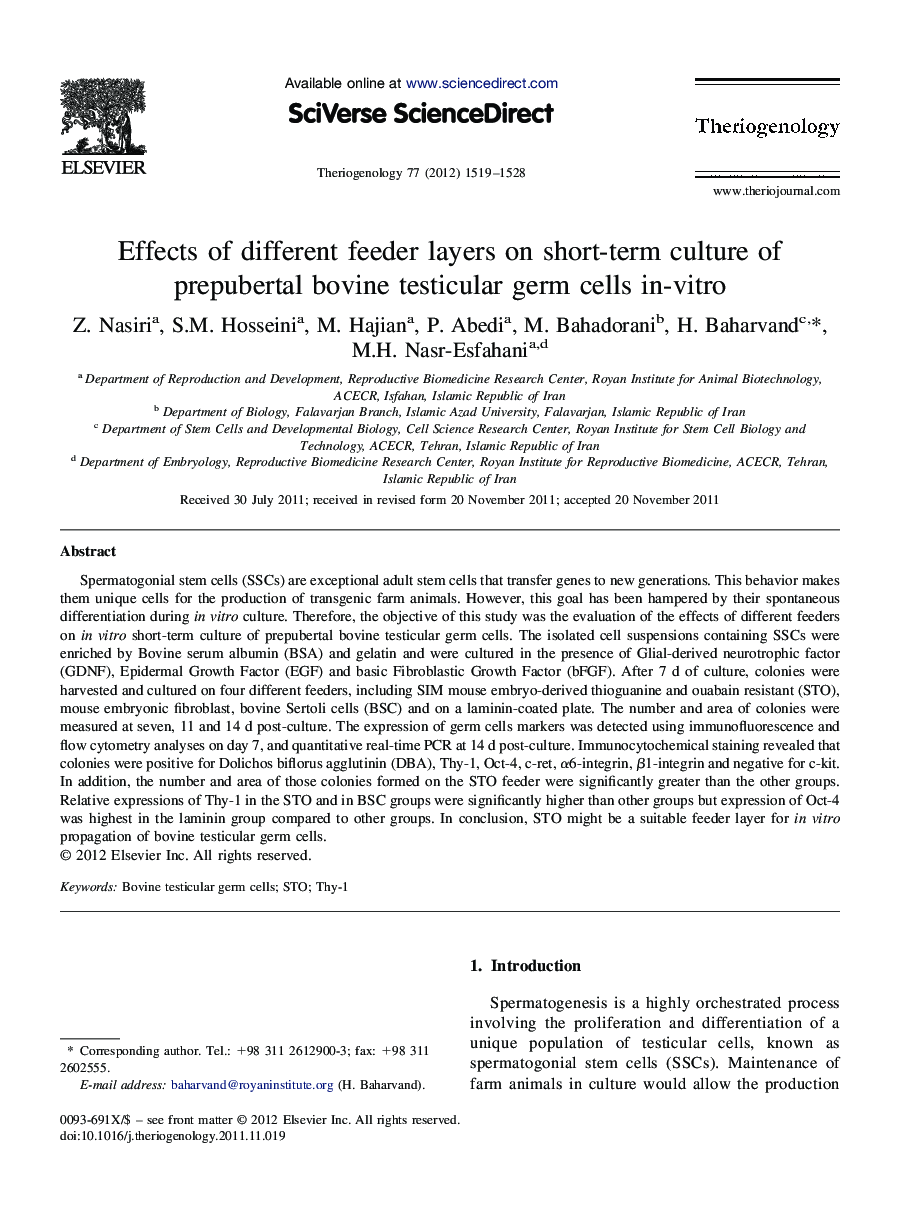| Article ID | Journal | Published Year | Pages | File Type |
|---|---|---|---|---|
| 10892901 | Theriogenology | 2012 | 10 Pages |
Abstract
Spermatogonial stem cells (SSCs) are exceptional adult stem cells that transfer genes to new generations. This behavior makes them unique cells for the production of transgenic farm animals. However, this goal has been hampered by their spontaneous differentiation during in vitro culture. Therefore, the objective of this study was the evaluation of the effects of different feeders on in vitro short-term culture of prepubertal bovine testicular germ cells. The isolated cell suspensions containing SSCs were enriched by Bovine serum albumin (BSA) and gelatin and were cultured in the presence of Glial-derived neurotrophic factor (GDNF), Epidermal Growth Factor (EGF) and basic Fibroblastic Growth Factor (bFGF). After 7 d of culture, colonies were harvested and cultured on four different feeders, including SIM mouse embryo-derived thioguanine and ouabain resistant (STO), mouse embryonic fibroblast, bovine Sertoli cells (BSC) and on a laminin-coated plate. The number and area of colonies were measured at seven, 11 and 14 d post-culture. The expression of germ cells markers was detected using immunofluorescence and flow cytometry analyses on day 7, and quantitative real-time PCR at 14 d post-culture. Immunocytochemical staining revealed that colonies were positive for Dolichos biflorus agglutinin (DBA), Thy-1, Oct-4, c-ret, α6-integrin, β1-integrin and negative for c-kit. In addition, the number and area of those colonies formed on the STO feeder were significantly greater than the other groups. Relative expressions of Thy-1 in the STO and in BSC groups were significantly higher than other groups but expression of Oct-4 was highest in the laminin group compared to other groups. In conclusion, STO might be a suitable feeder layer for in vitro propagation of bovine testicular germ cells.
Related Topics
Life Sciences
Agricultural and Biological Sciences
Animal Science and Zoology
Authors
Z. Nasiri, S.M. Hosseini, M. Hajian, P. Abedi, M. Bahadorani, H. Baharvand, M.H. Nasr-Esfahani,
